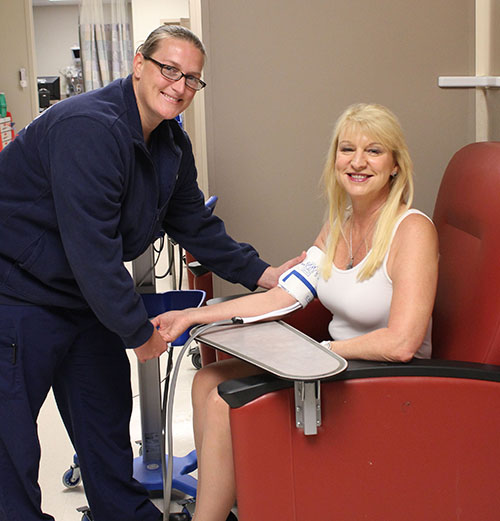Approximately 80 million U.S. adults have been diagnosed with high blood pressure, also known as hypertension. Even though it typically has no symptoms, high blood pressure can have deadly health consequences if not treated and controlled.
The American Heart Association has joined forces with Wellington Regional Medical Center to fight high blood pressure in Palm Beach County. WRMC CEO Robbin Lee sits on the American Heart Association’s Palm Beach County Market Board, and when the board announced blood pressure control as a local priority, Lee and the hospital immediately stepped up to support this effort.
“The healthier our community is, the more we can accomplish,” said Lee when asked about her passion behind the mission of the American Heart Association. “We all know that knowledge is power. The first step in preventing and controlling high blood pressure is to educate yourself and your loved ones about this disease.”
What is high blood pressure, and what happens in a person’s body that makes it dangerous?
Over time, if the force of the blood flow is often high, the tissue that makes up the walls of arteries gets stretched beyond its healthy limit and damage occurs.
What do the numbers in a blood pressure reading mean?
The two numbers (top and bottom number) tell you the amount of force pushing against your artery walls when the heart is contracting and when the heart is at rest. The top number in your blood pressure reading is called the systolic number and refers to the highest blood pressure measured in the arteries and occurs during the pumping phase of the heartbeat. The bottom number in your blood pressure reading is called the diastolic number and measures the lowest blood pressure in the arteries. The lowest blood pressure occurs when the heart muscle relaxes between beats. Both are measured in millimeters of mercury (mmHg).
What is ideal blood pressure?
According to the American Heart Association, ideal blood pressure is less than 120/80.
When does high blood pressure require emergency medical treatment?
High blood pressure often does its damage without creating symptoms, but when blood pressure numbers rise above 180 for the systolic pressure or 110 for the diastolic pressure, you need emergency treatment. Do not wait until your blood pressure reaches this level. It is crucial to monitor your blood pressure with your doctor. You can also obtain blood pressure readings at local grocery stores and pharmacies.
What is pulmonary hypertension?
Pulmonary hypertension is high blood pressure in the heart-to-lungs system. It is a different measurement altogether from systemic blood pressure. It reflects the pressure the heart must exert to pump blood from the heart through the arteries of the lungs. As with a kinked garden hose, pressure builds up and backs up. The heart works harder, trying to force the blood through. If the pressure is high enough, eventually the heart will not be able to keep up, and less blood can circulate through the lungs to pick up oxygen.
What is the difference between blood pressure and heart rate?
Blood pressure is the amount of force exerted on your arteries when your heart beats, and your heart rate is the number of times per minute your heart beats.
How do I know if I am at risk?
Your risk increases even more if you have high blood pressure along with other risk factors, such as age, heredity (including race), gender (male), being overweight or obese, smoking, high cholesterol, diabetes and physical inactivity.
It is important to monitor and control your blood pressure because high blood pressure can lead to heart disease, stroke and many other health deficits. Take action today!
To learn more, contact the American Heart Association locally at (561) 697-6600 or visit www.heart.org. To learn about the services available at Wellington Regional Medical Center, visit www.wellingtonregional.com.
ABOVE: Wellington Regional Medical Center CEO Robbin Lee gets her blood pressure checked by nurse Brittany Witherow. Photo by Danielle Jonas








